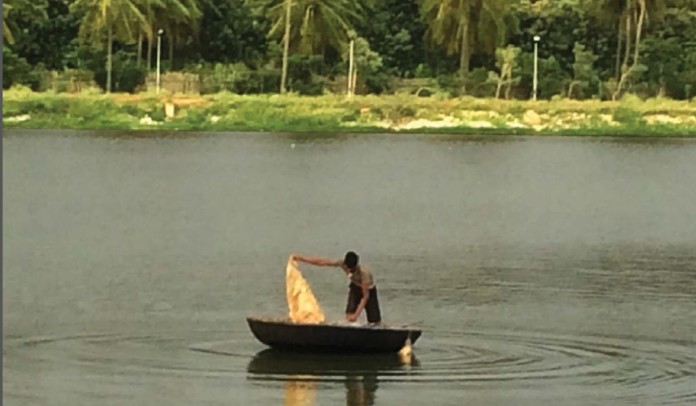There’s always an exception to the rule if one makes an effort to look closely. Among the despairing stories of deterioration of most lakes in Bengaluru, the Jakkur lake is close to reaching its original splendor. The successful rejuvenation of the 160 odd-acre lake situated between the city and the Kempegowda International Airport will be an inspiration to similar efforts across the city. And to the skeptics, this story is a living lesson on how to engage all the stakeholders towards achieving a common goal.
Every third Sunday of each month, Ahum and Jalaposhan organize a live music concert on the banks of the lake with the belief that art, community and nature go together. The stage with the lake as the backdrop looks stunning. The sight of migratory birds in the city’s biggest lake adds to its grace.
When governance is slack, the only way anything can be achieved is when the community takes leadership and persists with its goal. “When somebody does anything sincerely, many other things fall into place,” says Preenand Premachandran, CEO, Hebron Properties. Jalaposhana is the name of the eco-community of residents around the lake that spearheaded the revival. It even signed a memorandum of understanding with the local authority in May 2015 which gave the body the authority of maintaining the lake, a first for the city.
Hebron is one of the early campaigners among the city-based businesses to support revival of lakes. In 2014, the company supported planting of 700 sapplings and seeing it through with maintenance support since then. “I can vouch that it is the best maintained lake in Bangalore today,” he adds.
The Jakkur experience has prompted Hebron to launch the ‘Make Bangalore Green’ initiative which includes giving importance to local plant species and sourcing material for its luxury housing projects from around the city.
Even dhobhis (washermen) were not displaced when the lake revival plan started in 2012. They have been co-opted into the new design. Active fishing takes place now with catch reaching 500 kgs a day.
It is clear that the government agencies and local political leaders have had their contribution to the revival of the lake. On June 5, 2016, World Environment Day celebration all the key stakeholders – local MLA, corporator and all civic agencies chiefs were in attendance.
Recent worry
Best efforts can turn futile without vigilance. Dr Annapurna Kamath, a member of Jalaposhana, has noted that during heavy rains sewage from storm water drains from a few residential areas has started entering the lake. There are three storm water drains which feed the lake from Yelahanka, Agrahara and Shivanahalli which feed the lake.
Experts say the lake is barely fine despite massive efforts. The Karnataka State Pollution Control Board, research body TERI and the city’s water and sewage body, BWSSB are monitoring the lake quality. But they say help is needed to improve the lake and increase the capacity of the sewage treatment plant for better conservation.
Future prospects
A recent pilot project at the prestigious Indian Institute of Science is exploring the possibility of the lake supplying potable water to nearby towns. The study notes that strict control of sewage flow will open up this possibility. This will relax the pressure on the government from supplying drinking water from far off water bodies.
The biggest asset is the wetlands full of algae around lake which absorb harmful elements. The study is optimistic of creating similar wetland zones around several lakes in the city.
The Jakkur lake rejuvenation experience shows that local solutions to local problems exist. It only requires a motivated citizen group to initiate change. It has had a contagion effect on the city. Dozens of other lakes are being revived. There is hope that the city could spring back with its lakes in good condition in a couple of years.











